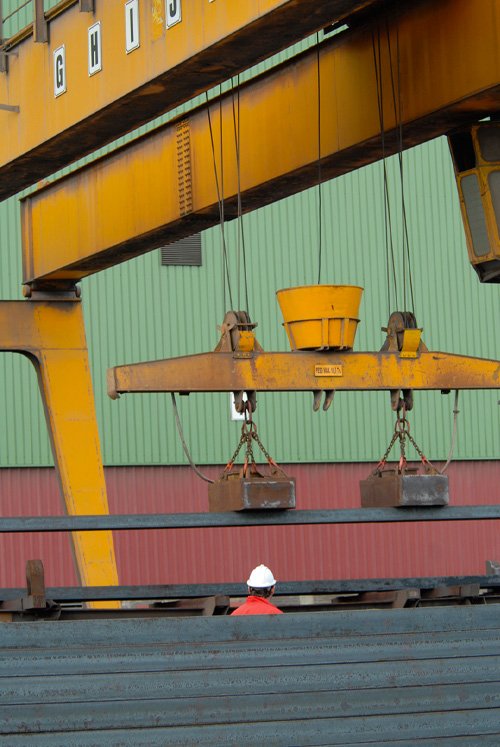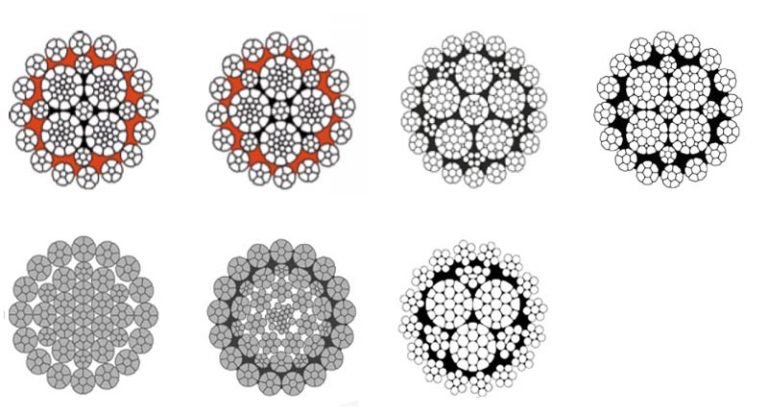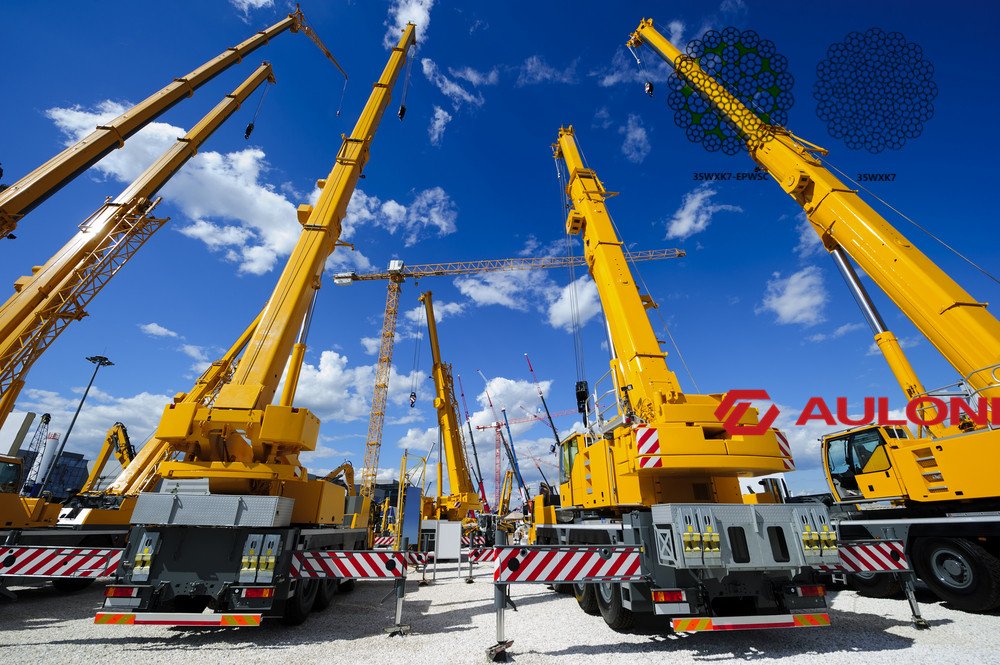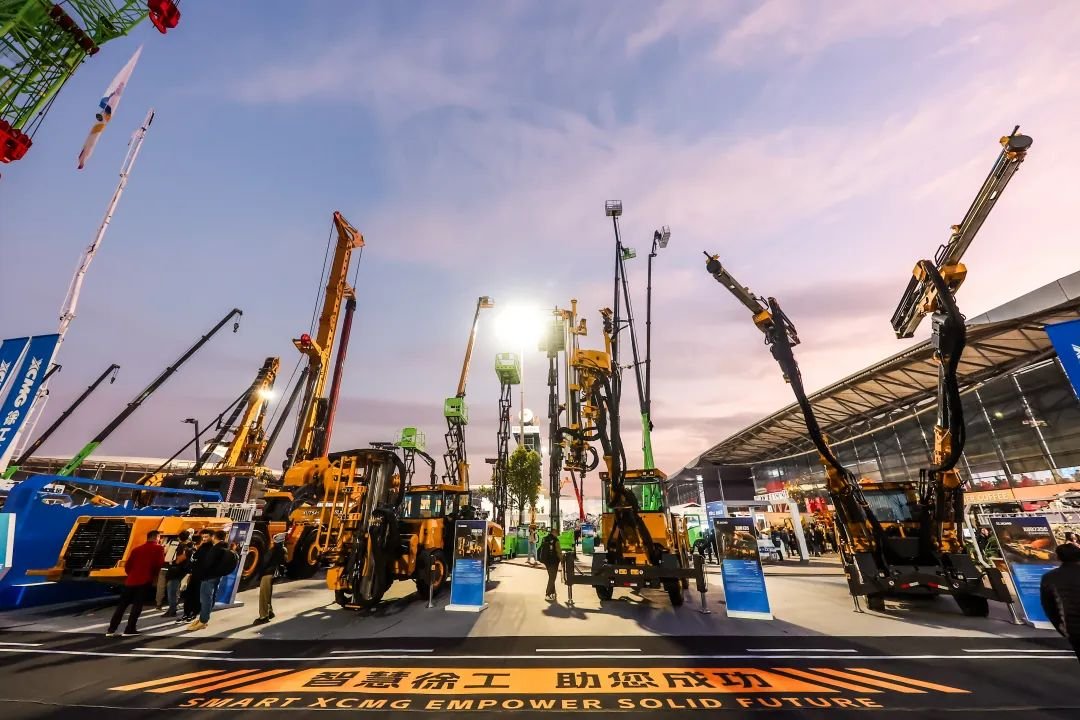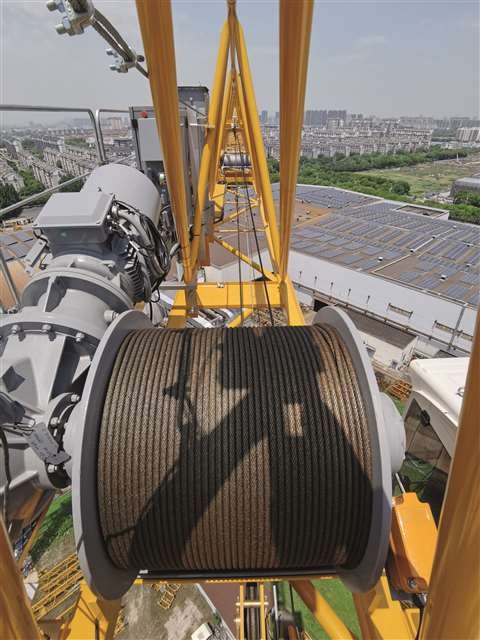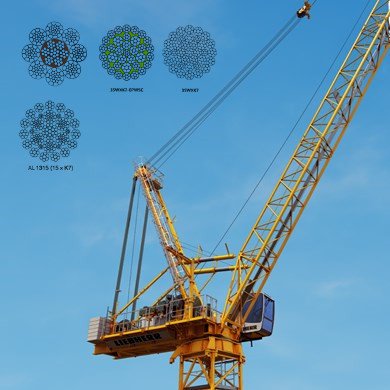Answer: Stainless steel wire rope is used for:
- Marine industry
- Construction
- Industrial applications
- Transportation
- Agricultural equipment
- Fencing and security systems
This article will continue the discussion on non-stainless steel wire rope from the following aspects.
Outline
Stainless Steel Wire Rope 7×7 & 7×19 Type 304
Stainless Steel Wire Rope
1. Introduction
Wire ropes are a core component of many mechanical and structural systems, known for their strength, flexibility, and reliability. Over time, advancements in material science have led to the development of stainless steel wire ropes, which combine traditional wire rope benefits with exceptional resistance to corrosion. This introduction provides an overview of stainless steel wire ropes, their definition, purpose, historical development, and how they differ from other types of stainless wire ropes.
Overview of Stainless Steel Wire Ropes
Definition and Purpose
A stainless steel wire rope is a cable composed of several stainless steel strands twisted together around a central core. These ropes serve as critical load-bearing and tension-transmitting elements in a variety of industries. The purpose of stainless steel wire ropes is twofold: to provide the strength and durability needed for heavy-duty tasks and to resist environmental factors—such as moisture, salt, and chemicals—that can cause traditional steel to corrode. This unique combination of mechanical performance and corrosion resistance makes stainless steel wire ropes indispensable for outdoor, marine, and industrial applications.
Historical Development
The concept of wire ropes dates back to the early 19th century when they were first introduced as a more reliable alternative to hemp ropes and chain links in mining operations. The initial designs used simple iron wires, which later evolved into stronger carbon steel variants. However, these early wire ropes were susceptible to rust and degradation in harsh environments. By the mid-20th century, the introduction of stainless steel—an alloy known for its chromium-based corrosion resistance—revolutionized the wire rope industry. As manufacturing techniques improved, stainless steel wire ropes became a go-to choice for critical applications requiring long-term durability and minimal maintenance, paving the way for their widespread adoption in marine, construction, and architectural projects.
Stainless Steel Wire Rope
Definition and Composition
Stainless steel wire ropes are constructed from stainless steel wires that are alloyed with chromium and sometimes nickel or molybdenum. The chromium content forms a passive oxide layer on the rope’s surface, providing inherent corrosion resistance. Depending on the intended application, these ropes can vary in construction, such as the number of strands and wires per strand (e.g., 7×7, 7×19), and the specific grade of stainless steel. The most common grades include Type 304, which offers general-purpose corrosion resistance, and Type 316, which is favored for marine and chemically aggressive environments due to its enhanced corrosion resistance and pitting resistance.
Comparison with Other Types of Stainless Wire Ropes
Stainless steel wire ropes can differ significantly in composition, strand configuration, and intended use. For example, Type 304 stainless steel wire ropes are widely used in general applications where corrosion resistance and strength are needed, but they may not perform as well in highly saline or acidic environments. In contrast, Type 316 stainless steel wire ropes contain molybdenum, providing superior resistance to chlorides and making them the preferred choice for marine and offshore applications. Another distinguishing factor is the rope construction: configurations like 1×19 are stiff and ideal for structural uses, while 7×7 and 7×19 constructions offer greater flexibility, making them suitable for pulleys, winches, and dynamic load scenarios. Additionally, stainless steel wire ropes may be treated with coatings or have a plastic coating to further enhance their durability and performance under specific conditions.
By understanding the differences in grade, construction, and treatment, industries can select the appropriate type of stainless steel wire rope to meet their unique operational requirements, ensuring optimal performance and longevity.
2. Types and Classifications of Stainless Steel Wire Ropes
Common Configurations (7×7, 7×19, 1×7, 1×19, 6×19)
Material Composition
Stainless steel grades (304, 316, 317)
Comparison of properties
Strand and Wire Configuration
Difference in flexibility, strength, and durability
3. Manufacturing Process of Stainless Steel Wire Rope
Wire Drawing and Stranding
Step-by-step explanation of the wire drawing process
How wires are stranded into ropes
Coating and Finishing Techniques
Galvanizing, plastic coating, and anti-corrosion treatments
Quality Control
Testing methods (e.g., tensile, fatigue, and bending tests)
Certification standards (ISO, ASTM)
4. Mechanical Properties of Stainless Steel Wire Rope
Tensile Strength
How tensile strength is determined and why it’s crucial
Flexibility and Bendability
How different wire rope configurations impact bending properties
Fatigue Resistance and Durability
Resistance to wear and tear from repeated loading
How fatigue resistance extends rope life
5. Applications of Stainless Steel Wire Rope
Marine Industry
Role in ship rigging, anchor chains, lifelines, etc.
Corrosion resistance in saltwater environments
Construction Industry
Applications in cranes, hoists, and elevators
Automotive and Aerospace
Uses in winches, control cables, etc.
Agricultural and Industrial Uses
Agricultural fencing, logging, etc.
Specialty Applications
Robotics, space exploration, and other high-tech uses
6. Corrosion Resistance and Environmental Impact
Types of Corrosion
Pitting corrosion, crevice corrosion, stress corrosion cracking
Factors Affecting Corrosion Resistance
Alloy composition, surface finish, exposure conditions
Maintenance Strategies
How to clean and maintain stainless steel wire ropes for longevity
7. Design and Selection of Stainless Steel Wire Rope
Criteria for Selection
Load capacity, bending flexibility, environment
Choosing between Type 304 and Type 316 stainless steel
Application-Specific Considerations
How to tailor wire ropes for particular environments (marine, construction, industrial)
8. Future Trends in Stainless Steel Wire Rope Technology
Innovations in Materials
Nanotechnology, alloys, and coatings for enhanced performance
Automation and Advanced Manufacturing Techniques
The impact of automation on wire rope production
Sustainability
Recycling and eco-friendly manufacturing practices
9. Case Studies and Real-World Applications
Marine Rigging Systems
Detailed case study of offshore platforms
Tower Cranes in Construction
Performance under heavy lifting conditions
Failure Analysis
Studying the causes of wire rope failures and lessons learned
Conclusion
Stainless steel wire rope is a critical material that combines durability, corrosion resistance, and high performance. Its wide range of applications—spanning marine, construction, industrial, and architectural sectors—demonstrates its importance in modern engineering and design. By understanding the properties, configurations, and proper maintenance of stainless steel wire ropes, users can ensure reliable, long-lasting solutions for their most demanding projects.
Stainless Steel Wire Rope 7×7 & 7×19 Type 304
Stainless Steel Wire Rope 7×7 & 7×19 Type 304
Stainless steel wire ropes in 7×7 and 7×19 configurations are commonly used for various applications due to their corrosion resistance and strength. Here’s a breakdown of both types:
7×7 Stainless Steel Wire Rope (Type 304)
Structure: Composed of 7 strands, each containing 7 wires.
Flexibility: Less flexible compared to 7×19, making it ideal for applications requiring greater strength and more rigidity.
Applications: Commonly used in situations with less bending, such as static lines, handrails, or elevator systems.
7×19 Stainless Steel Wire Rope (Type 304)
Structure: Composed of 7 strands, each containing 19 wires.
Flexibility: Much more flexible compared to the 7×7 type due to its higher number of wires per strand.
Applications: Suitable for applications that require frequent movement, bending, or coiling, such as rigging, hoisting, and control cables.
Material: Type 304 Stainless Steel
Corrosion Resistance: Type 304 stainless steel is highly resistant to rust, oxidation, and corrosion, making it ideal for outdoor or marine environments.
Strength: Good tensile strength, though not as high as some other types of stainless steel (e.g., Type 316).

